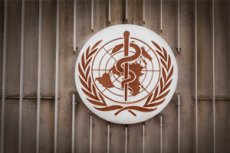New publications
Why WHO changed the definition of "airborne transmission" in light of the pandemic
Last reviewed: 02.07.2025

All iLive content is medically reviewed or fact checked to ensure as much factual accuracy as possible.
We have strict sourcing guidelines and only link to reputable media sites, academic research institutions and, whenever possible, medically peer reviewed studies. Note that the numbers in parentheses ([1], [2], etc.) are clickable links to these studies.
If you feel that any of our content is inaccurate, out-of-date, or otherwise questionable, please select it and press Ctrl + Enter.

After a confusing 2020, the WHO has finally changed its definition of how diseases can spread through the air. But what is the new definition — and what should happen next?
What happened?
In the spring of 2020, when COVID-19 began to spread, there was confusion among scientists, doctors, public health experts, and others. Many claimed that the new virus was airborne, but the World Health Organization (WHO) refused to use the terms “airborne” or “aerosolized” in the context of COVID-19 until 2021. This had implications as the world debated mask-wearing (and what types of masks were appropriate) and whether indoor spaces affected transmission.
Now, four years later and after two years of debate among experts, the WHO has changed its definition of “airborne” spread of infectious pathogens in hopes of avoiding the confusion and miscommunication that characterized the first year of the pandemic and hampered efforts to control the spread of the virus.
What was the previous definition?
Until now, WHO had only defined a pathogen as airborne if it was capable of moving through the air in particles smaller than 5 microns in size and infecting people more than 1 metre away. Only a small number of pathogens, notably measles and tuberculosis, met this definition. Most respiratory viruses, WHO said, were transmitted by “droplet transmission,” when droplets produced by an infected person coughing or sneezing land in the eyes, mouth, or nose of another person.
These definitions have implications for disease control. Stopping the spread of smaller particles requires isolation rooms, N95 respirators, and other protective measures that are more complex and expensive than hand washing and social distancing. There is also the question of which of these measures are needed only in hospitals and which are also needed elsewhere.
During the pandemic, experts argued that scientists and engineers had already shown that the WHO’s categorization by distance and particle size was flawed and that infectivity could be due to multiple factors, such as clouds of particles that could infect people over short distances or larger particles that could remain airborne for long periods. Others argued that short distances were not proof that the disease was spread only by coughing and sneezing, as droplets could also be spread by breathing or talking.
What is the new WHO definition?
The new report clearly divides transmission of pathogens into those that occur through contact (with people or surfaces) and “airborne transmission.”
Airborne transmission is divided into two subcategories: “direct deposition,” where droplets reach the mucous membranes of another person’s mouth, eyes, or nose (essentially the previous WHO definition of airborne transmission), and “airborne transmission or inhalation,” where droplets are inhaled. It is this second subcategory that represents the significant change. The key point is that the entire definition is independent of the size or distance of the droplets.
What does this mean for future epidemics and pandemics?
Agreement on new definitions has already been reached with the Africa Centers for Disease Control and Prevention, the Chinese Center for Disease Control and Prevention, the European Centre for Disease Prevention and Control and the US Centers for Disease Control and Prevention. However, what this means for a future epidemic or pandemic remains to be seen.
The WHO report does not make recommendations on how these new definitions should or could impact prevention or control policies, noting only that reducing the spread of small infectious respiratory particles will require “airborne precautions” such as masks and isolation rooms. The report says it was unable to reach consensus on prevention and control.
Who was on the advisory group?
The advisory group included about 50 scientists, doctors and engineers. They sought to emphasize the importance of involving engineers and ecologists, not just public health experts and doctors.
What did they say about the new definition?
“We can now use the word ‘airborne’ to communicate with the public,” said Lindsay Marr, an environmental engineer at Virginia Tech in the US and a member of the advisory group. “Previously, public health officials avoided that word, and people didn’t understand why.” She noted that some of the language was still “awkward,” but the important thing was that the science was right.
Farrar said the key is to base the new definition on clear experimental data. He noted that there is still debate about whether influenza, despite more than 100 years of studying it, is transmitted through the air or not. “We know a certain amount, but we don’t know for sure,” Farrar said. “That’s the kind of work we desperately need for influenza.”
